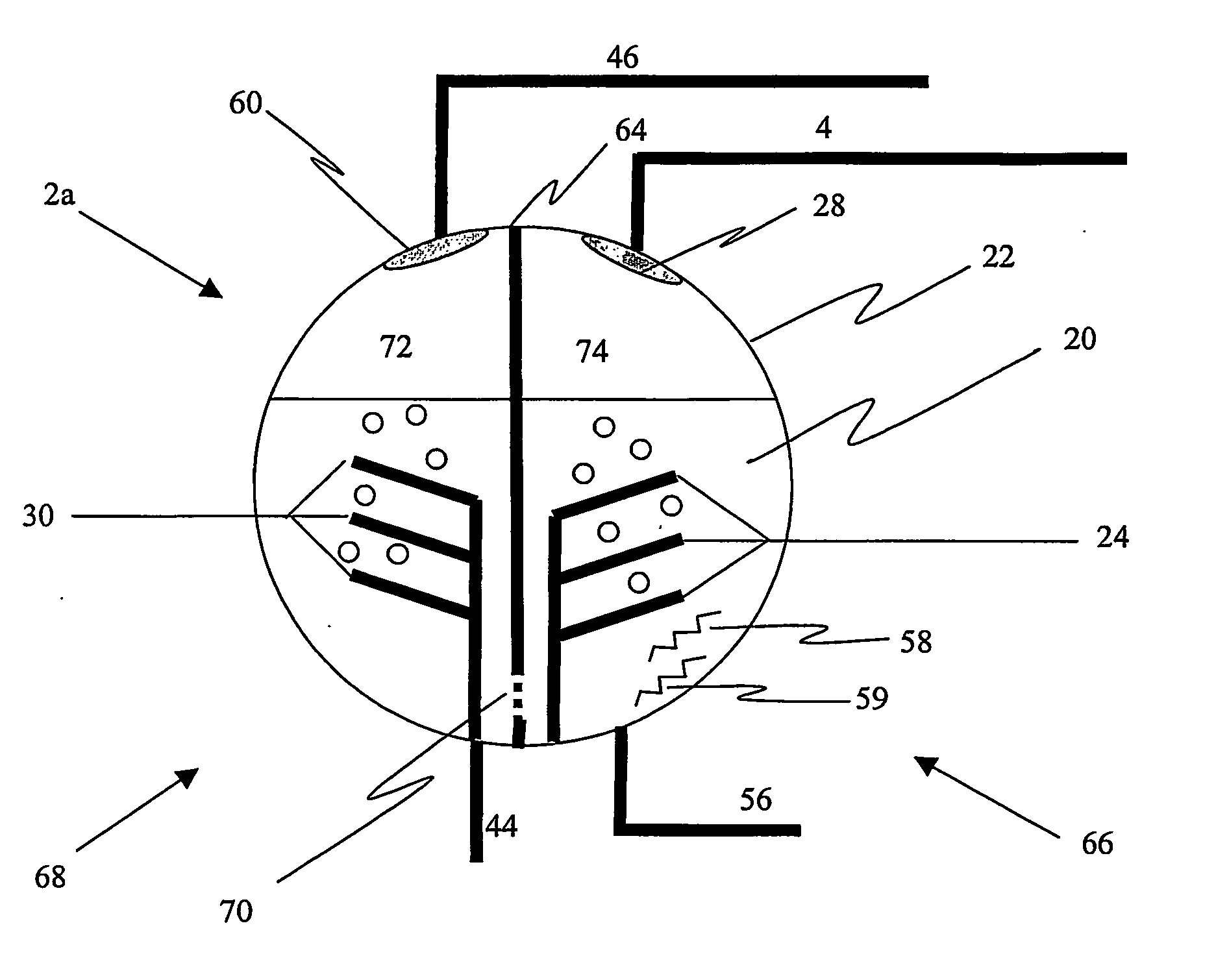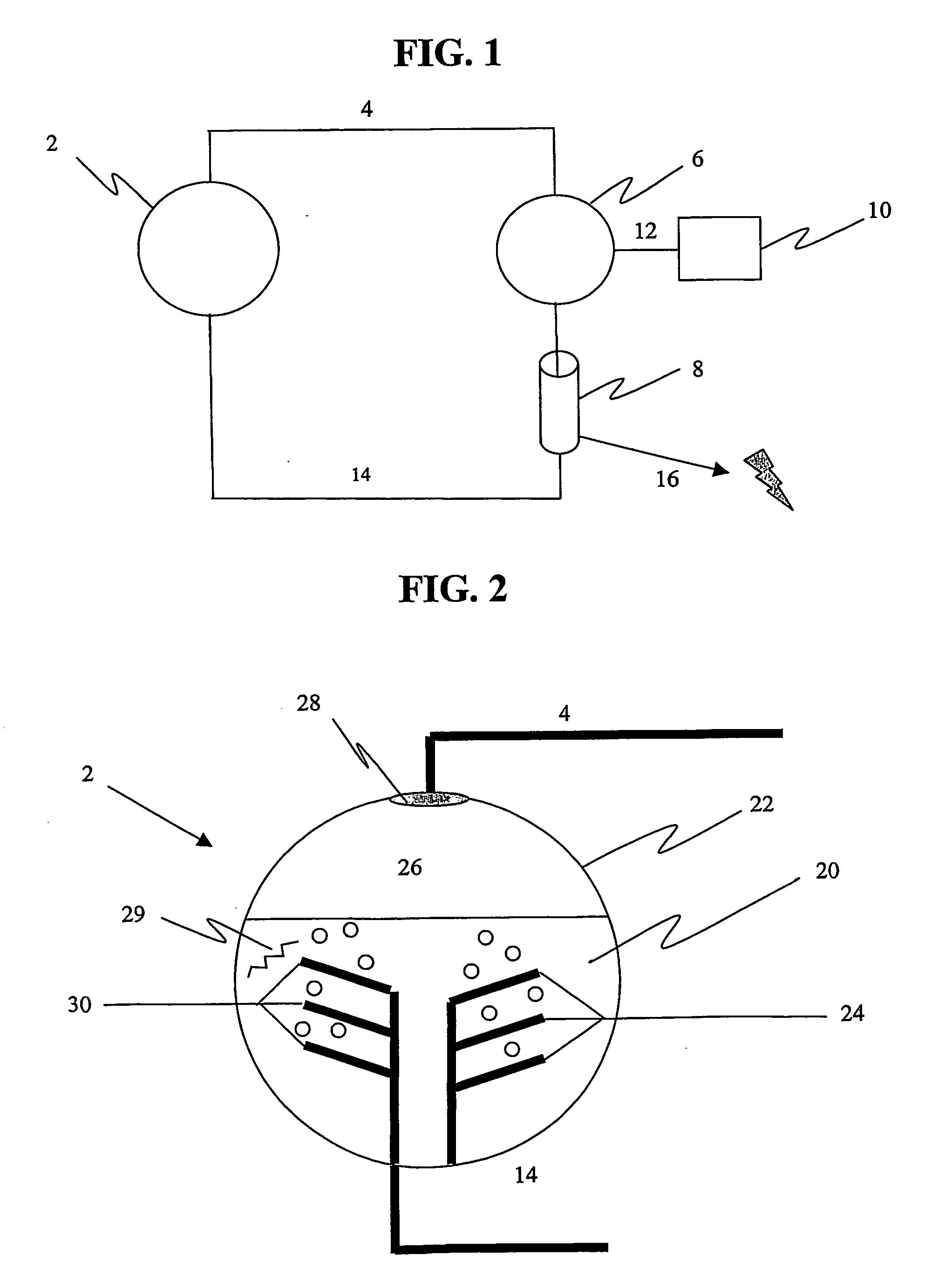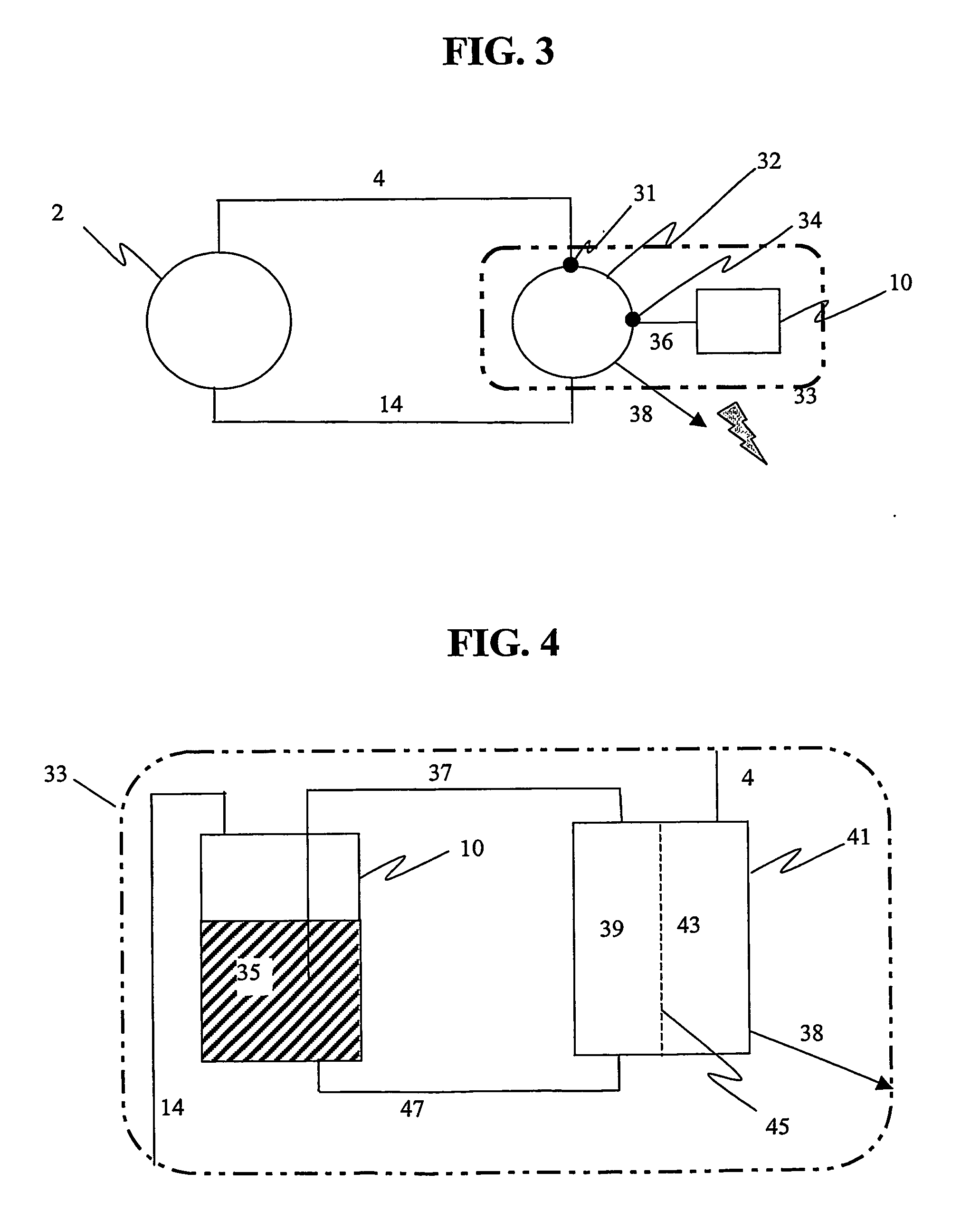Integrated oxygen generation and carbon dioxide absorption method apparatus and systems
a carbon dioxide and oxygen generation technology, applied in the direction of physical/chemical process catalysts, sustainable manufacturing/processing, separation processes, etc., can solve the problems of insufficient power density of systems, insufficient energy system technology, and insufficient supply of hydrocarbon fuels for mechanical, electrical and/or thermal energy, etc., to reduce the number of vehicles required, improve the duration of missions, and reduce acquisition costs
- Summary
- Abstract
- Description
- Claims
- Application Information
AI Technical Summary
Benefits of technology
Problems solved by technology
Method used
Image
Examples
Embodiment Construction
Embodiments of the invention are discussed in detail below. In describing embodiments, specific terminology is employed for the sake of clarity. While exemplary embodiments are discussed, it should be understood that this is done for illustration purposes only. The invention is not intended to be limited to the specific terminology selected or the specific embodiments described. A person skilled in the relevant art will recognize that other components and configurations can be used without parting from the spirit and scope of the invention. All references cited herein are incorporated by reference in their entirety as if each had been individually incorporated.
The present invention produces oxygen and absorbs carbon dioxide and other byproducts produced during the oxidation (combustion) or reformation of hydrocarbons and other chemical species. The oxidation process is typically used to produce mechanical, electrical, or thermal power. The present invention uses a unique and ener...
PUM
| Property | Measurement | Unit |
|---|---|---|
| Flow rate | aaaaa | aaaaa |
| Permeability | aaaaa | aaaaa |
| Solution | aaaaa | aaaaa |
Abstract
Description
Claims
Application Information
 Login to View More
Login to View More - R&D
- Intellectual Property
- Life Sciences
- Materials
- Tech Scout
- Unparalleled Data Quality
- Higher Quality Content
- 60% Fewer Hallucinations
Browse by: Latest US Patents, China's latest patents, Technical Efficacy Thesaurus, Application Domain, Technology Topic, Popular Technical Reports.
© 2025 PatSnap. All rights reserved.Legal|Privacy policy|Modern Slavery Act Transparency Statement|Sitemap|About US| Contact US: help@patsnap.com



